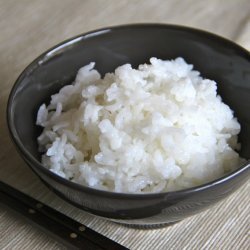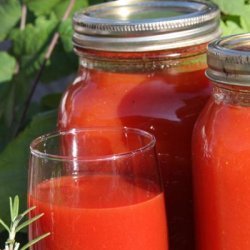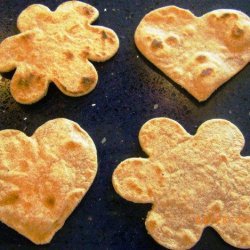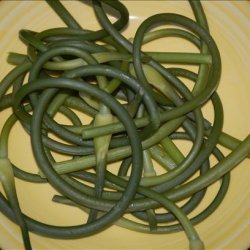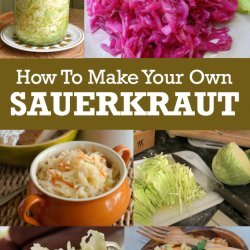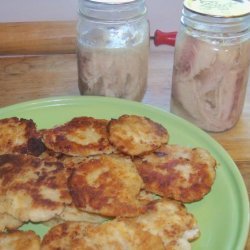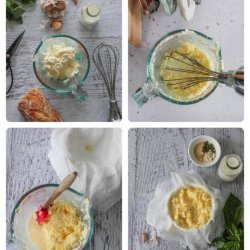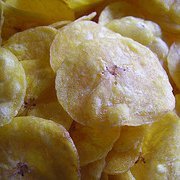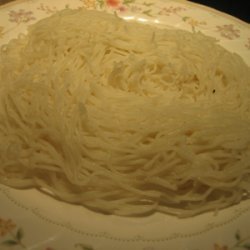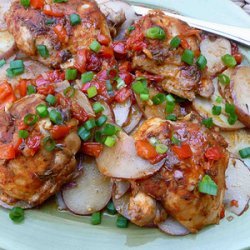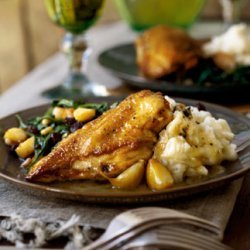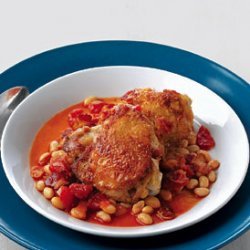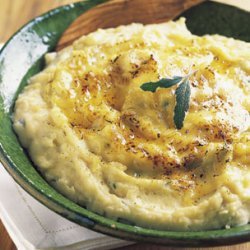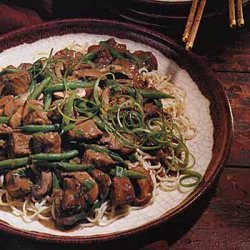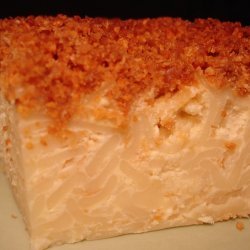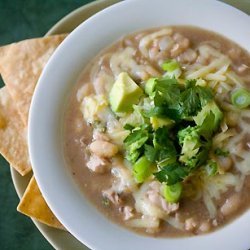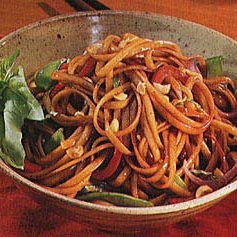Directions:
- To make the noodles: Mix the dough by placing 3 cups of flour in a bowl and pouring in half the saltwater in a steady, slow stream. Gently stir to mix. Gradually drizzle in more of the salted water, stirring until the dough forms a slightly crumbly mass. Exert a bit of pressure to form the dough into a ball and place it in a closed plastic bag to rest for about 30 minutes at room temperature, or refrigerate it for several hours or overnight.
- Sandwich the rested noodle dough between layers of heavy-duty plastic (a 6-foot plastic, oilcloth, or vinyl tablecloth, folded in half, works well). Place the plastic-enclosed dough on the floor, and stand barefoot on top of it. Press down with both feet the whole surface of your feet, not just the heels and gradually turn in a circular fashion, using small, stomping steps. As your body weight is applied, the dough will flatten out and stretch. Stop occasionally to remove and fold the dough with your hands, then sandwich it again between the layers of plastic cloth and repeat your foot-pressing activity. If necessary to prevent the dough from sticking to the plastic, sprinkle it with additional flour.
- After 4 or 5 minutes, when the dough feels elastic and has acquired a satiny sheen, do a final round of stomping to flatten it into a 1/4 inch-thick, more-or-less, oval shape.
- Transfer the dough to a large, lightly floured board. Alternating vertical and horizontal strokes, use a lightly floured rolling pin to stretch the dough into a large oval, about 1/8-inch thick, 1 foot wide, and about 1 1/2 feet long. If necessary, divide the dough in half and make two smaller ovals.
- Sprinkle the rolled-out dough liberally with flour, and fold it back on itself 4 or 5 times (like folding a paper fan, but do not crease or press the folded dough). Use a long, sharp knife to cut the dough into 1/4-inch-thick ribbons that are 1 1/2 feet long. Lightly dust the noodles with flour before lifting them from the board.
- To cook the noodles: Bring a very large pot of water to a rolling boil. Gently shake off excess flour from the noodles before lowering them into the pot. Stir the noodles to be sure they separate into individual strands. Cook at a steady boil for 7 to 8 minutes, stirring occasionally. Test a noodle by pulling it out of the pot and plunging it into cold water: It should be translucent, with no hard core, but still firm. If necessary, boil further, checking progress every 45 seconds or so.
- If you will be serving the noodles hot later, lift them from the pot, reserving the boiling water (either use a pasta insert, or scoop a strainer or colander under the noodles).
- If you will be serving the noodles cold, drain them.
- Whether you plan to serve the noodles hot or cold, rinse them well under cold running water to remove surface starch that would otherwise make them gummy.
- Set the noodles aside until ready to eat they can be held for up to several hours (refrigerate if holding for more than 20 minutes). When ready to use, rinse noodles in boiling hot water if serving them in hot soup, or cold water if serving them chilled as a salad.
- Elizabeth Andoh shares her tips with Epicurious: ·Udon ko (high-gluten udon flour) is sold at Asian groceries; high-gluten bread flour can be substituted. ·Although a tatami-matted floor is an ideal surface on which to stomp noodles, American linoleum-covered flooring works well, too. If your kitchen has a hard wood or flagstone floor, you will need to spread a large bath towel under the plastic cloth to provide some cushioning. · If foot-stomping is not your style, you can use mechanical kneading devices such as a dough hook on a food processor, or a lasagna attachment to a pasta machine.
Nutrition Facts
| Amount Per 1 Serving | |||
| Calories | 0 Kcal (0 kJ) | ||
| Calories from fat | 0 Kcal | ||
| % Daily Value* | |||
| Total Fat | 0g | 0% | |
|---|---|---|---|
| Sodium | 1744.11mg | 73% | |
| Potassium | 0.36mg | 0% | |
| Calcium | 1.1mg | 0% | |
| Amount Per 100 g | |||
| Calories | 0 Kcal (0 kJ) | ||
| Calories from fat | 0 Kcal | ||
| % Daily Value* | |||
| Total Fat | 0g | 0% | |
|---|---|---|---|
| Sodium | 38758mg | 73% | |
| Potassium | 8mg | 0% | |
| Calcium | 24mg | 0% | |
* Percent Daily Values are based on a 2000 calorie diet. Your daily values may be higher or lower depending on your calorie needs.
Find out how many calories should you eat.
Get Your Recipe of Health!
Follow RecipeOfHealth on Facebook!


